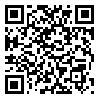Volume 13, Issue 6 (November & December 2022)
BCN 2022, 13(6): 745-754 |
Back to browse issues page
1- Emergency Medicine Research Team, Tabriz University of Medical Sciences, Tabriz, Iran.
2- Research Center for Evidence Based Medicine, Tabriz University of Medical Sciences, Tabriz, Iran.
3- Department of Emergency Medicine, Faculty of Medicine, Zanjan University of Medical Sciences, Zanjan, Iran.
4- Clinical Research Development Center, Shahid Beheshti Hospital, Qom University of Medical Sciences, Qom, Iran.
2- Research Center for Evidence Based Medicine, Tabriz University of Medical Sciences, Tabriz, Iran.
3- Department of Emergency Medicine, Faculty of Medicine, Zanjan University of Medical Sciences, Zanjan, Iran.
4- Clinical Research Development Center, Shahid Beheshti Hospital, Qom University of Medical Sciences, Qom, Iran.
Abstract:
Introduction: Stroke is known as a common cause of disability all over the world. Stroke prognosis estimation has always been a topic of interest. In this study, it was tried to investigate the prognostic value of laboratory findings of complete blood count in a systematic review.
Methods: In this systematic review, literature from Medline via (PubMed, Ovid) Embase, Scopus, Cochrane Library, and ProQuest between 1988 and 2020 were included. A combination of Mesh and free terms were included in the search strategy: “Stroke”, “Red Cell Distribution Width”, “Blood Cell Count”, “Mean corpuscular hemoglobin”, and “Mean Corpuscular Volume” and with the abbreviation, in all fields. Data synthesis was achieved using content analysis.
Results: Elevated red blood cell distribution width was associated with stroke, cardiovascular events, and all-cause deaths among patients with prior stroke. Mean platelet volume has not any prognostic significance in ischemic stroke. There was a poor association between mean corpuscular volume (MCV) and stroke prognosis. Globulin and hemoglobin level predicted short-term mortality following acute ischemic stroke.
Conclusion: Complete blood count as a routine and efficient test performed in health care centers can be used to estimate the prognosis of stroke.
Methods: In this systematic review, literature from Medline via (PubMed, Ovid) Embase, Scopus, Cochrane Library, and ProQuest between 1988 and 2020 were included. A combination of Mesh and free terms were included in the search strategy: “Stroke”, “Red Cell Distribution Width”, “Blood Cell Count”, “Mean corpuscular hemoglobin”, and “Mean Corpuscular Volume” and with the abbreviation, in all fields. Data synthesis was achieved using content analysis.
Results: Elevated red blood cell distribution width was associated with stroke, cardiovascular events, and all-cause deaths among patients with prior stroke. Mean platelet volume has not any prognostic significance in ischemic stroke. There was a poor association between mean corpuscular volume (MCV) and stroke prognosis. Globulin and hemoglobin level predicted short-term mortality following acute ischemic stroke.
Conclusion: Complete blood count as a routine and efficient test performed in health care centers can be used to estimate the prognosis of stroke.
Type of Study: Review |
Subject:
Clinical Neuroscience
Received: 2020/03/19 | Accepted: 2021/03/1 | Published: 2022/11/1
Received: 2020/03/19 | Accepted: 2021/03/1 | Published: 2022/11/1
| Rights and permissions | |
 |
This work is licensed under a Creative Commons Attribution-NonCommercial 4.0 International License. |





